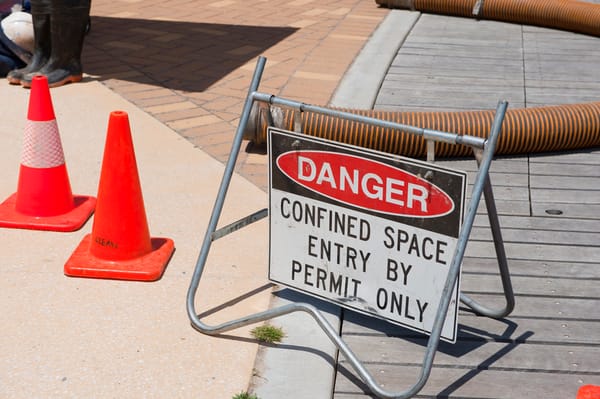Working in confined spaces: Entry permits
By Joanna Weekes
A confined space is a high-risk working environment. If your workers carry out work in confined spaces, any risks associated with the work being undertaken in the confined space must be eliminated so far as is reasonably practicable. Ideally, this means that you remove the need for the worker to enter the confined space completely – but this is not always possible.
If this most effective control measure to eliminate the risk entirely is not possible, you need to take the appropriate steps to reduce the risk and the likelihood of the risk occurring.
Entry permits for confined spaces
Any worker who needs to enter the confined space to perform work must hold a confined space entry permit.
Confined space permits serve as formal documentation to ensure that the safe system of work is followed and that it is safe for the worker to enter the space. The permit also confirms that the worker is authorised to enter the confined space.
Nominate a competent supervisor to issue the confined space entry permits on behalf of your business.
Remember, a permit is also necessary for the first time a person enters the space to conduct the initial hazard identification – but the permit will need to be revised after this based on the results of the hazards identified and the controls to be put in place.
What information should the permit include?
The permit must be completed in writing by a competent person and should include the following information:
- Details specifying the confined space to which the permit applies
- Name of any worker permitted to enter the space
- Period of time the permit allows the worker to be in the confined space to complete the work being carried out
- Whether the permit is for multiple entries into the confined space
- What the access points for the space are
- Period of time that the permit is in operation
- All control measures that must be implemented before work commences and also while work is being carried out, e.g. atmospheric testing, PPE
- Any equipment to be taken into the confined space
- Anything that should not be taken into the space, e.g. ignition sources
- Any specialist emergency rescue equipment required.
- A place on the permit to indicate that the work in the confined space has been completed and all persons have left the space.
- A written record that all workers have exited the confined space on completion of the work.
- Signature from supervisor to confirm this.
Q&A from the helpdesk
Question: As I am not a registered training organisation (RTO) am I able to deliver confined space safety training to my workers at a local level or is there a legal requirement for the training to be delivered by an RTO?
Answer: There is a requirement that information, training and instruction needs to be provided to workers in relation to working in confined spaces, but there is no specific requirement in relation to who carries out the necessary training.
The requirement is that the training and assessment must be carried out and a record of the training must be kept for 2 years. This is in contrast to the training and assessment requirements for high risk work licence assessments which must be conducted by an approved RTO.
It is however recommended that any training in relation to confined spaces complies with the relevant Australian Standard – AS/NZS 2865:2009 Confined spaces.
From the experts behind the Health & Safety Handbook, the Bulletin brings you the latest work health and safety news, legal updates, case law and practical advice straight to your inbox every week.

